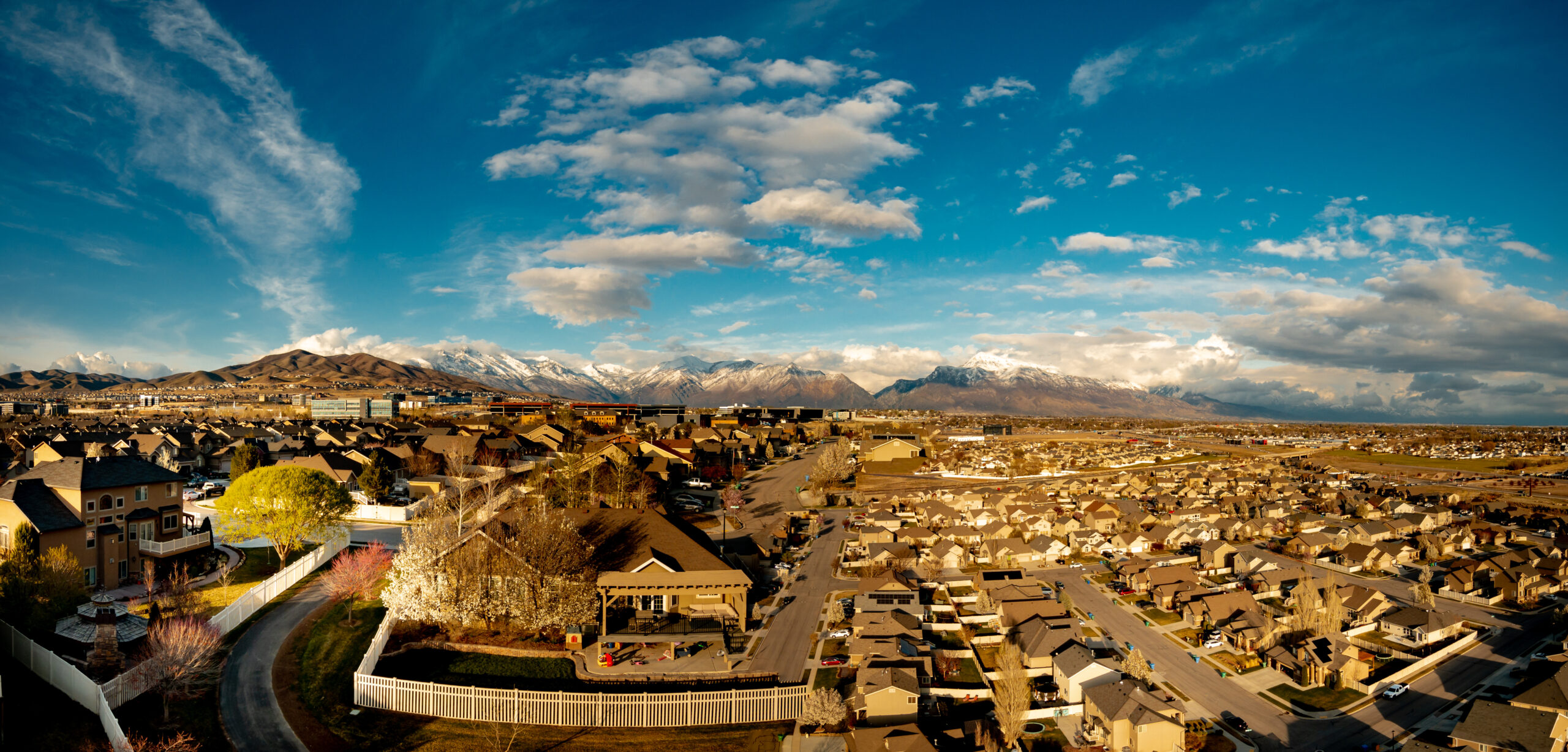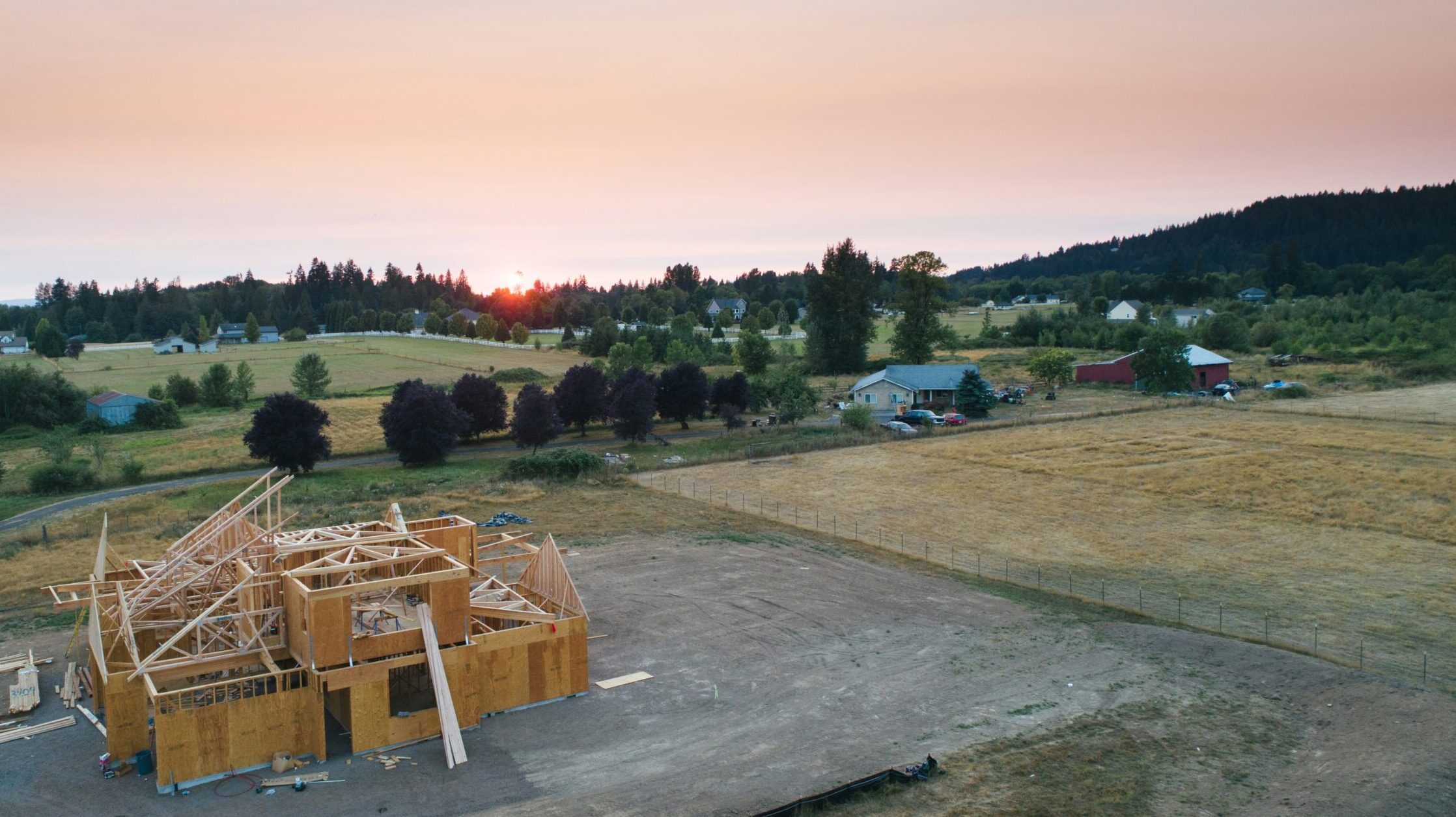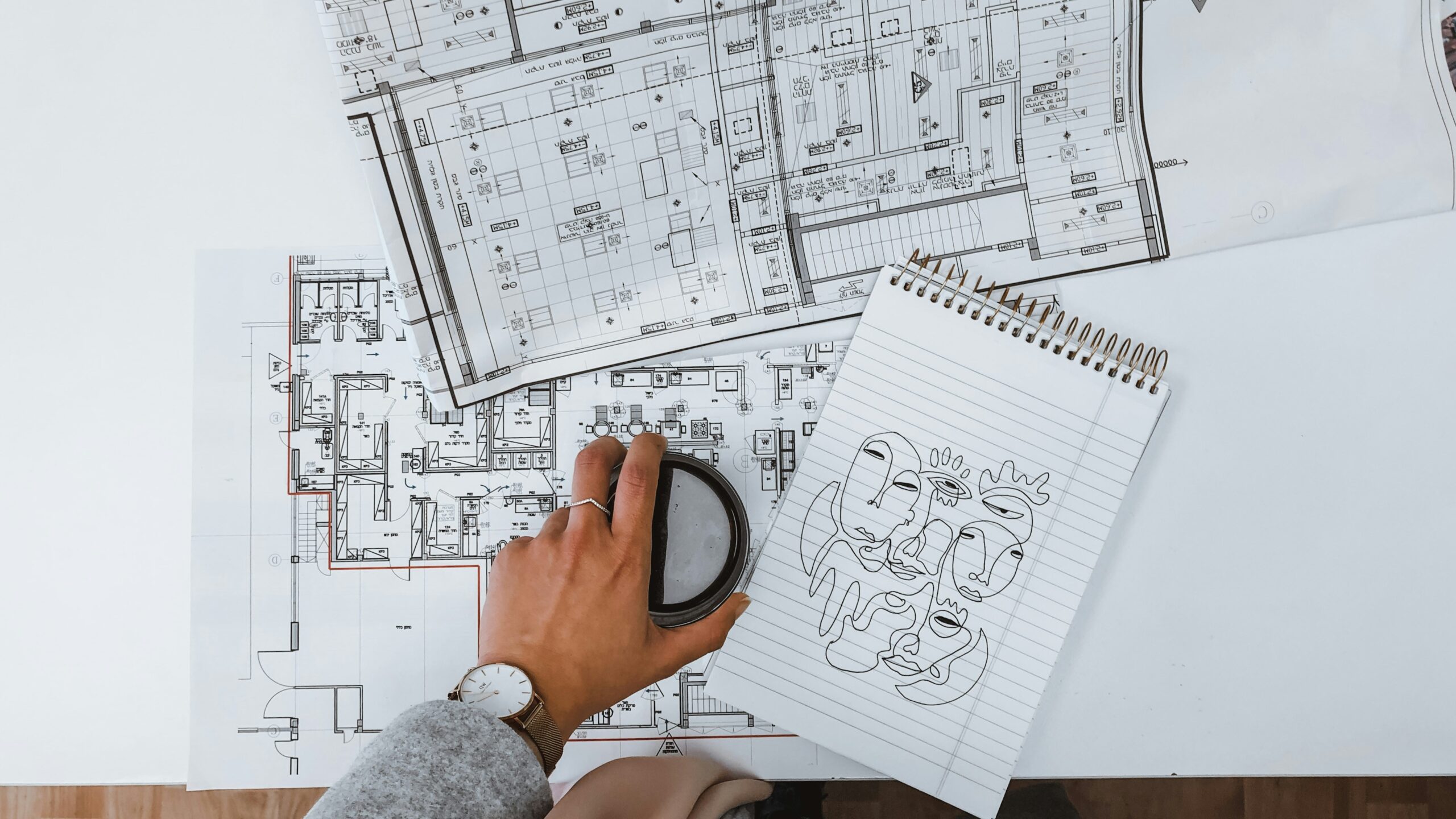Are you deciding between building a luxury custom home or buying an investment property? Both paths can lead to long-term rewards, but the right choice depends on your goals, budget, and desired income. In this Roots Builders guide, we compare both options, show how investors maximize rental income and property value, and explain how thoughtful design can turn a personal home into a high-performing real estate investment.
Turning Real Estate Into Real Growth
Utah’s real estate market continues to attract investors and homeowners who want more than just a place to live. Many people wonder whether it is smarter to build a luxury custom home with a higher resell value or purchase an investment property that provides consistent income.
Both choices can make sense. A rental property has the potential to generate steady income and long-term growth, while a custom home offers comfort, pride of ownership, full design freedom, and higher potential income. The smartest move may combine both, creating a custom-built property that provides personal enjoyment and reliable income through long- or short-term rentals.
If you are considering building for income, download our free eBook on creating themed AirBnBs.
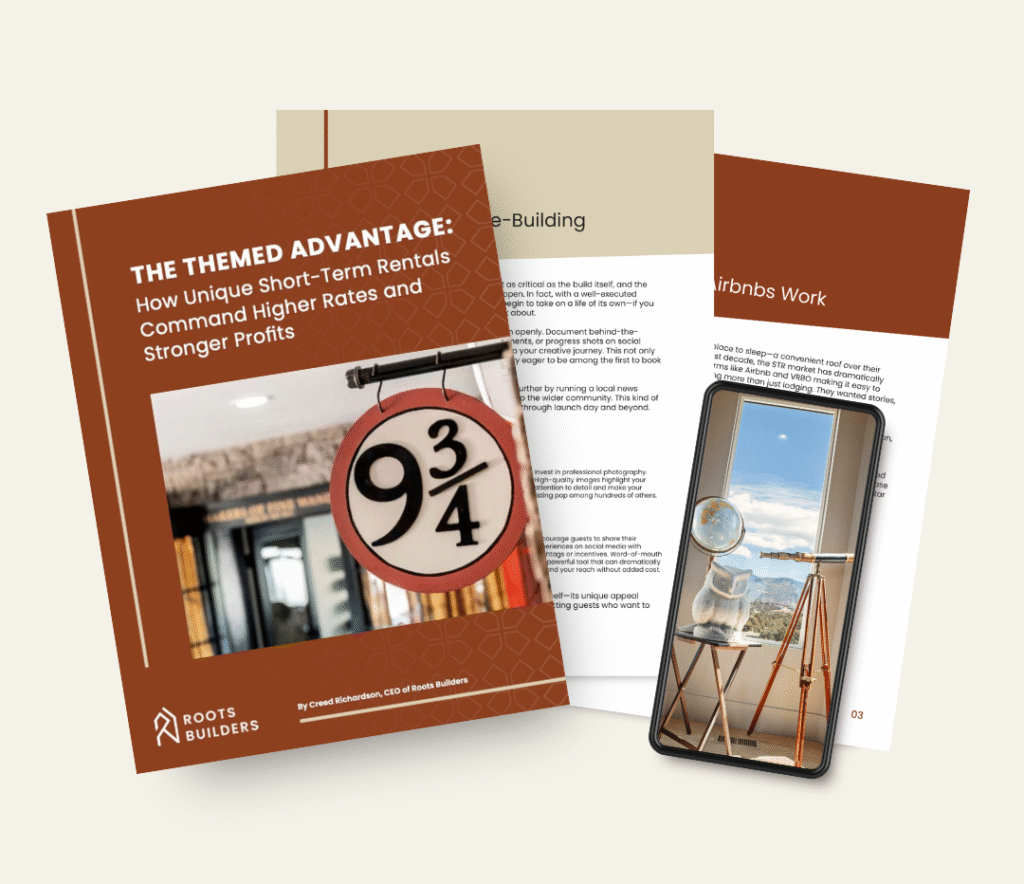
What Is an Investment Property? Definition and Examples.
An investment property is any real estate purchased primarily to earn income rather than serve as your main home. According to Investopedia, investors buy these properties to collect rental income, benefit from appreciation, or both.
Common types of investment properties include:
- Single family homes rented to long-term tenants
- Multi-unit or commercial properties that provide multiple rent payments
- Short-term rentals such as vacation homes or AirBnBs that generate higher nightly rates
For example, a single family home in Utah County might rent for $2,000 per month, while a themed AirBnB near Park City could earn twice that amount during the winter season.
A simple guideline many investors use is the 2 percent rule. It suggests that monthly rent should equal about 2 percent of the property’s purchase price. If you purchase a home for $400,000, it should ideally rent for around $8,000 per month. Few markets consistently reach that level, but it serves as a helpful step for estimating potential returns before factoring in expenses such as insurance, taxes, and maintenance.
Why Investors Choose Rental Properties
Owning a rental property offers predictable income and immediate cash flow if rented quickly. It can diversify your portfolio, generate passive income, and provide a hedge against inflation.
Advantages include:
- Monthly rental income: Tenants provide consistent payments that build long-term wealth.
- Property appreciation: Real estate often increases in value over time.
- Tax deductions: Mortgage interest, repairs, and depreciation can lower taxable income.
- Flexible management: You can manage tenants directly or hire a property management company.
However, every rental property comes with ongoing expenses. Repairs, maintenance, and insurance all add up. Unexpected costs such as roof replacement or plumbing work can affect profits. Vacancy periods, property taxes, and changing rent demand are other important factors. Successful investors plan for these variables and build reserves to cover them.
The Appeal of Building a Luxury Custom Home
A luxury custom home offers something entirely different from an existing property: complete control. You design the space around your lifestyle, from the layout and lighting to the finishes and exterior design.
Homes built with high-quality materials and modern design often hold or increase their value more effectively than standard listings, especially when they are located in desirable areas and well maintained.
Why homeowners choose to build:
- Custom layouts that match your daily routine
- Energy-efficient systems that reduce utility expenses
- Durable materials that limit future maintenance
- Design freedom that builds emotional and resale value
Building may take longer than buying, but it creates an asset that fits your lifestyle and can double as a profitable property. Explore possible tax benefits for new construction to enhance your financial return.
Comparing ROI When You Build or Buy
When choosing between building and buying, consider both short-term income and long-term value.
| Factor | Buying an Investment Property | Building a Custom Home |
| Purchase Price | Lower upfront cost but limited design control | Higher cost but total design freedom |
| Time to Income | Rent can start immediately | Income begins after construction |
| Maintenance | Older homes often need more repairs | New builds require less maintenance |
| Rental Income Potential | Based on market averages | Can be increased through custom features |
| Value Appreciation | Grows with the market | Can outperform average growth |
| Tenant Appeal | Depends on property condition | Designed for ideal renters |
Investors must also consider ongoing expenses such as insurance, maintenance, taxes, and property management. If you’re leaning toward building, our detailed construction timeline guide breaks down each phase so you can plan your financing, temporary housing, and rental income start date. Homes designed with energy efficiency and quality construction can reduce these costs while maintaining high rental income.
According to Zillow’s annual Utah Market Report, homes in Utah have appreciated an average of six to eight percent annually in recent years. Custom homes that feature premium finishes and flexible layouts tend to appeal to a wider range of buyers and renters, which can support stronger resale and rental potential.
Investors must also consider ongoing expenses such as insurance, maintenance, taxes, and property management. Homes designed with energy efficiency and quality construction can reduce these costs while maintaining high rental income.
When a Custom Home Becomes an Investment Property
More Utah homeowners are beginning to design their custom homes with both comfort and income potential in mind. A well-planned home can include separate living quarters, casitas, or basement apartments that provide consistent rental income without reducing privacy.
Roots Builders has helped clients create properties that do both—beautiful living spaces that also earn revenue. Some include:
- Private basement apartments for long-term tenants
- Guest suites with separate entrances for short-term renters
- Themed vacation homes that attract travelers year-round
You can learn more about these options in our post on how to turn your basement into an investment opportunity.
Research from AirDNA shows that rentals with unique design features and strong visual themes tend to achieve higher occupancy and nightly rates compared to standard listings.
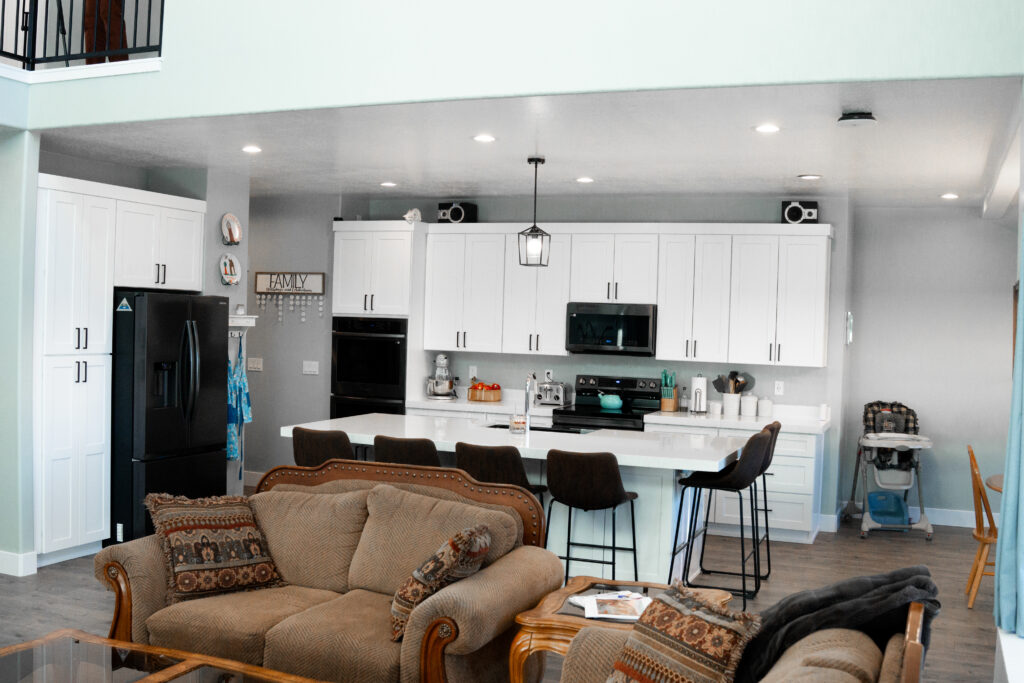
Understanding Income, Rent, and Expenses
Before committing to either path, review potential income and costs. This gives a clearer picture of profitability.
Income may include:
- Monthly rent or nightly rates
- Cleaning or service fees
- Optional add-ons such as parking or furnished units
Expenses may include:
- Mortgage or loan payments
- Taxes, insurance, and utilities
- Routine maintenance and repairs
- Vacancy periods when rent is not collected
- Management or advertising fees
For example, if a property rents for $3,000 per month and total monthly expenses reach $1,500, your net rental income is $1,500. Over a year that equals $18,000 before taxes, not including appreciation or potential tax deductions.
Accurately estimating these figures helps investors decide whether to buy an existing rental property or build one that maximizes return from the start.
Tenants, Renters, and Everyday Management
Managing tenants requires planning and communication. Screening renters carefully, creating clear lease agreements, and responding quickly to maintenance requests are essential steps to protecting your investment.
Even with reliable tenants, repairs are inevitable. Plumbing issues, appliance replacements, and yard maintenance are all normal. Setting aside a repair fund equal to about one percent of the property’s value each year can help cover unexpected expenses.
Landlord insurance also protects against loss from property damage or unpaid rent. It is usually affordable compared to potential repair costs after storms, accidents, or tenant damage.
Is It Financially Better to Buy or Build
The answer depends on your goals and timeline. Buying an existing property produces income faster, while building provides control, efficiency, and stronger long-term value.
The National Association of Home Builders reports that new homes often have lower maintenance costs and higher resale prices within the first decade compared to older properties. In a growing market like Utah, custom homes can show appreciation similar to investment properties, offering both lifestyle benefits and long-term potential.
Financing also plays a role. A construction-to-permanent loan allows you to roll building costs into a mortgage after completion, simplifying payments. Rental properties often require larger down payments or higher interest rates.
When comparing ROI, consider both rental income and equity growth. Building a home gives you the freedom to create value intentionally through design, layout, and material quality.

Real Estate Strategy: Lifestyle and Profit Together
Real estate offers flexibility. You can live in your property part-time, rent it seasonally, or operate a short-term listing for consistent income. This hybrid strategy is increasingly popular among Utah investors who want both lifestyle and profit.
Properties located near attractions like parks, ski resorts, or business centers often draw steady rental interest from visitors and professionals. Homes that include premium kitchens, spa bathrooms, or outdoor entertaining areas often command higher rents and maintain strong value at resale.
Roots Builders specializes in creating homes that meet both emotional and financial goals. Every property we design combines craftsmanship, efficiency, and beauty so that your home performs well in the market and feels right for you.
Next Steps for Smart Investors
If you are ready to take the next step toward your investment property or custom build, start with a clear plan.
- Define your primary goal. Decide whether you want monthly income, resale potential, or both.
- Determine your budget, including land costs, construction, insurance, and ongoing maintenance.
- Research local listings and demand to understand rent ranges in your target area.
- Plan for management and decide who will handle tenants, bookings, or maintenance.
- Design for ROI by incorporating features such as separate entrances, storage, or flexible spaces.
- Track income and expenses over time to evaluate performance and make improvements.
These steps help ensure that your investment remains profitable and sustainable.
Choosing the Right Partner
Your builder plays a major role in the success of your investment. You need a team that understands construction quality, design, and real estate value. Roots Builders brings all three together.
With extensive experience in Utah’s terrain, weather, and building codes, we help you create a property that looks beautiful, functions efficiently, and grows in value. Whether you want a rental property, a vacation retreat, or a forever home, we build with honesty, communication, and care.
Building Value That Lasts
Choosing between an investment property and a luxury custom home is not only about money. It is about building something meaningful. Real estate can provide financial independence, but it should also create comfort and connection.
At Roots Builders, we believe the best investments start with craftsmanship, trust, and purpose. Whether your goal is income, resale value, or simply a beautiful place to call home, we are ready to help.
Start your next project with confidence and download our free eBook on creating themed AirBnBs to learn how great design can turn a home into a reliable source of income and long-term value.
